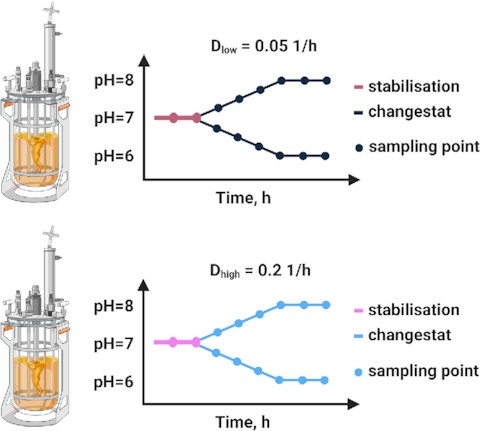Moreover, we saw the decline of butyrate producing taxa as well as lower concentrations of butyrate at pH > 7.5, that often occur together with CRC. Moreover,
the alkaline pH usually accompanies slow gastrointestinal transit (Lewis and Heaton
1997) and constipation, that is typical for CRC (Kojima
et al.
2004). This suggests that alkaline environments enable this bacterium to acquire benefits over lachnoclostridia or other mucin degrading bacteria such as
Bifidobacterium bifidum, B. caccae and
B. fragilis which abundances decreased at higher pH.
High pH in colonic lumen is one of the key parameters related to CRC (Kashtan
et al.
1990; Walker and Walker
1992; Ohigashi
et al.
2013), however, the data on the influence of alkaline environment on the development of colon microbiota are missing. It might be explained by the relevance of alkaline pH to protein fermentation resulting in formation of ammonia from amino acids. Branched short chain fatty acids (BCFA) isobutyrate and isovalerate, which are produced during protein degradation have been considered to be biomarkers for gut health as protein fermentation by genera such as
Bacteroides and
Clostridium can yield phenols, p-cresol and biogenic amines—potentially harmful compounds for the intestinal epithelium (Aguirre
et al.
2016; Rios-Covian
et al.
2020).
Our results revealed the increase of proteolytic bacteria (Clostridium, Escherichia) along with the decrease of butyrate producers (Faecalibacterium, Blautia, Lachnospira) at pH > 7.5, even in the presence of fermentable carbohydrate pectin.
In conclusion, we showed that pH is a crucial trigger in the development of continuously growing faecal consortia. The changestat experiments demonstrated the pH-specific changes in the faecal microbiota, for example in relation to alkaline pH environment, often associated with pathologies. The species such as
B. ovatus were prevalent within the whole range of pH, while butyrate producing
Faecalibacterium or
Coprococcus comes were severely inhibited at pH > 7.5. Further variations in the composition and metabolism were caused by the dilution rate,
representing either fast or slow colonic transit rate. Consequently, the concomitant bacterial metabolites have specific health effects. The effect of pH on the fermentation of other dietary fibres, and their combinations, by faecal microbiota can be studied by applying a similar cultivation approach. As the pH of the colonic environment is directly related to diet, science-driven diet modifications could be an easy solution to support gut health.
pH is a crucial trigger in the development and metabolic activity of faecal microbial consortia.

academic.oup.com

